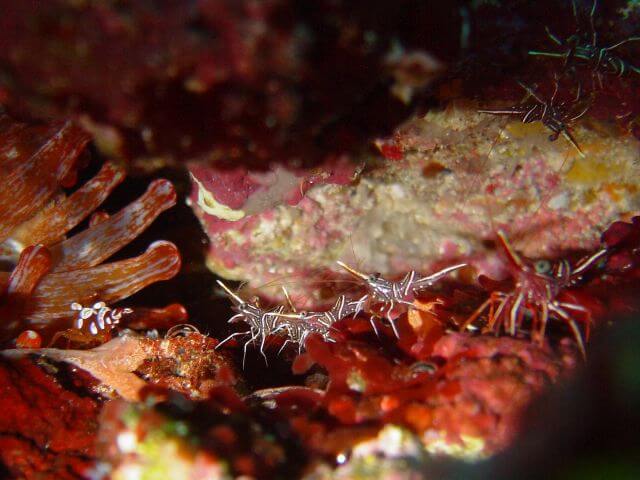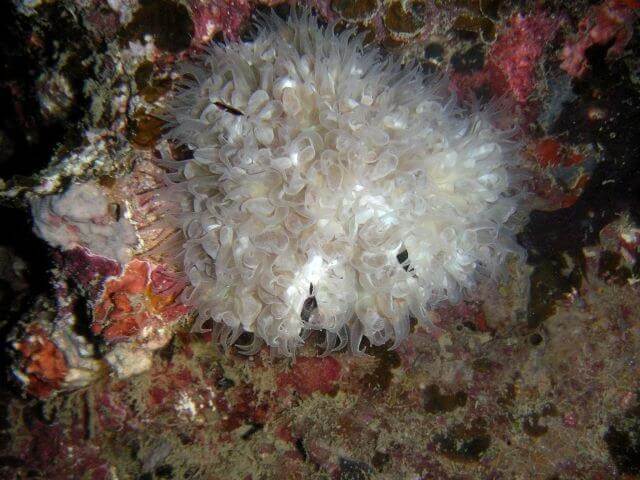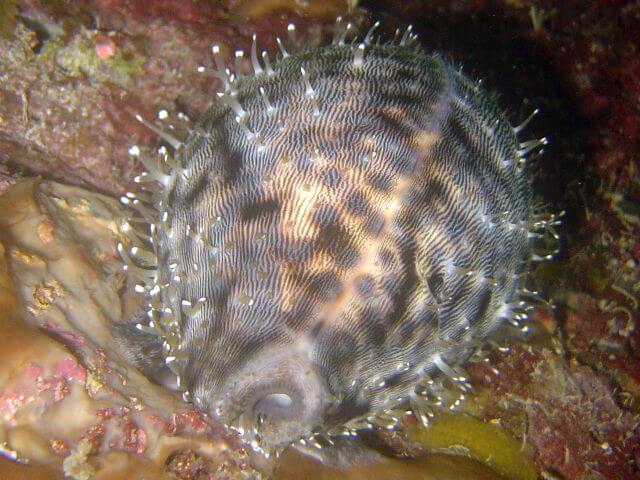If you are an avid snorkeler and you think you’ve seen it all, but haven’t tried night snorkeling yet, prepare to be amazed!
Snorkeling can be a fun and exciting activity, even a relaxing one depending on conditions and location. However, revisiting the same reef at night will make you feel like you are in a completely new environment, like you’ve never been there. Corals at night look very different, many animals which are hard to spot during the day prefer to come out at night, and others you might have seen hundreds of times during your regular daily snorkeling, will surprise you with uncommon and unexpected nocturnal behaviors.

Main aspects and considerations for night snorkeling
As we mentioned, snorkeling in the night is very different than snorkeling in broad daylight. You will need some specific gear to be able to enjoy it to the fullest.
- A good dive light is essential for night snorkeling to illuminate the reef and the animals populating it at night. Do not point the torch in the eyes of your snorkeling buddy, or in the eyes of the animals you might encounter: it is very uncomfortable and might even create some defensive or aggressive behaviors.
- Water at night can be cooler, even in warm Fiji! Consider wearing a 1 or 3 mm wetsuit, or at least a rash guard for thermic protection.
- A luminous signaling device, such as a small flashlight or a chemical light to attach to your suit or gear will give you added safety and peace of mind.
- Last but not least, redundancy is always a good idea when snorkeling at night: an additional spare torch might be a lifesaver in case of malfunction of your main one.
Communication with our buddy is also something to consider and plan ahead when night snorkeling. Just borrow some special signals from scuba diving, such as a big circle on the bottom or in the blue to ask if or state that you are ok, a rapid movement left to right to communicate imminent danger, or a vertical movement top to bottom to call for others’ attention. Nocturnal animals are on the lookout for noises and they won’t appreciate you and your buddy screaming or enthusiastically chatting about the creatures you are encountering, or even using quackers or banging on metal.

What happens underwater at night?
A coral reef is a busy place at night! You would not believe the quantity of action that a snorkeler or diver may be able to witness after sunset. The best time to explore the underwater world at night is definitely right around sunset: you can enter the water with the last rays of the sun and swim back under a magnificent starry sky. This is the time when the inhabitants of the reef get really busy, either preparing for their beauty sleep, or getting ready for a night hunt.
During your night snorkeling excursion, you will see animals that are normally hiding at day, coming out at night: the reef sharks that normally lay under table corals or in crevices and overhangs, swim freely at night looking for prey. If you have seen moray eels while snorkeling, you probably just saw their heads. But at night time, you might be able to observe them swimming out of their homes, and witness the beautiful and elegant movements of their entire body.
Other animals that are easily seen during the day will be sleeping at night: to protect themselves from night predators, for instance, the clever parrotfish recur to an interesting escamotage. The mucous cocoon that they secrete from their own mouth and skin, created in their gill cavities, forms a barrier, like a big bubble, where they can comfortably sleep without predators being able to smell them. If the bubble is burst, they wake up immediately and swim away much faster than any predator. Pretty smart, isn’t it?
Also, corals act in their own special way at night. While during the day, the zooxanthellae use the sunlight to transform sugars into energy, at night the polyps come out, extending their long tentacles in search of food such as microscopic critters that commonly float by at night.
This is particularly visible while snorkeling at night on reefs of soft corals, which Fiji is so famous for.
The colors of the reef also look completely different at night. The dive torch will make them look bright and vibrant, but try switching it off for a minute. Once your eyes adjust to the darkness, you will start seeing sparkles and rays underwater, and you will notice these lights move: it is the magnificent natural effect called bioluminescence, a form of chemiluminescence, or chemical lights. Bioluminescence occurs in those animal species that contain a molecule called luciferin that produces light once it reacts to oxygen. Through this chemical reaction, light is produced: a truly fascinating phenomenon. You will quickly realize that you are surrounded by microscopic bioluminescent organisms if you start moving your arms and legs in the water, and they immediately produce light around you: try it tonight!

Why should I try snorkeling in the night?
Night snorkeling can be a little spooky, but it’s an exciting adventure that you should definitely try. Observing the different behaviors and movements of squids, cuttlefish, shrimps, lobsters and other crustaceans, but also crinoids, basket stars, sea urchins, and sea spiders, is truly interesting and will give you a much more thorough knowledge of these animals in their natural habitat.
It is an enriching experience that you can embark on with a skilled snorkeling buddy or following a more experienced guide, and can be done both from shore and from a boat, but always following snorkeling safety protocols and special techniques. It is a good way of coming a little out of our comfort zone, without reaching any dangerous extremes, just to discover that there’s a whole new world out there that is waiting for you!



